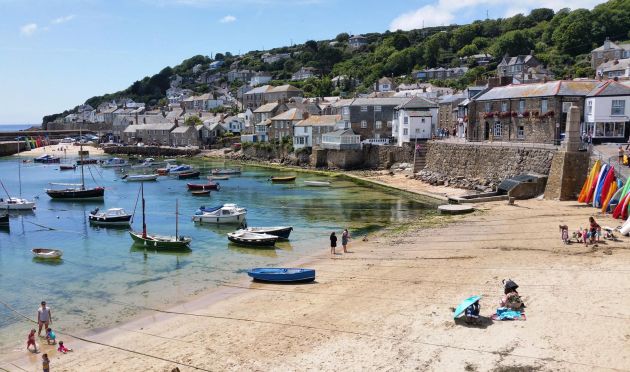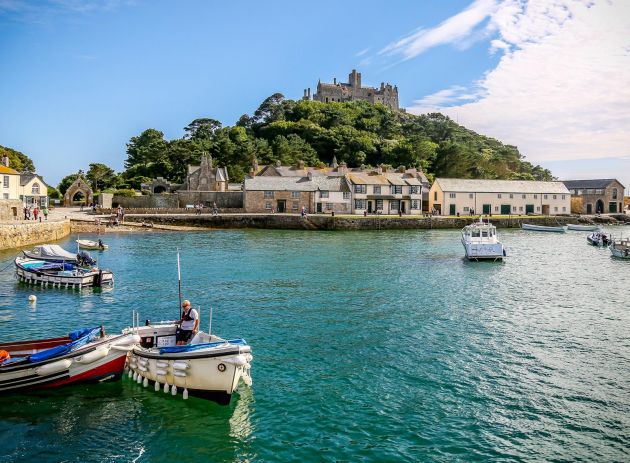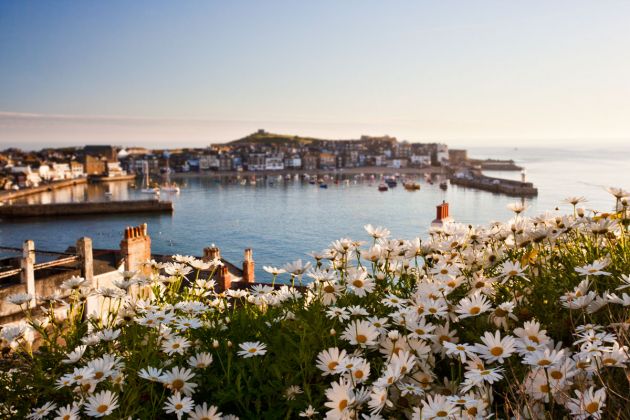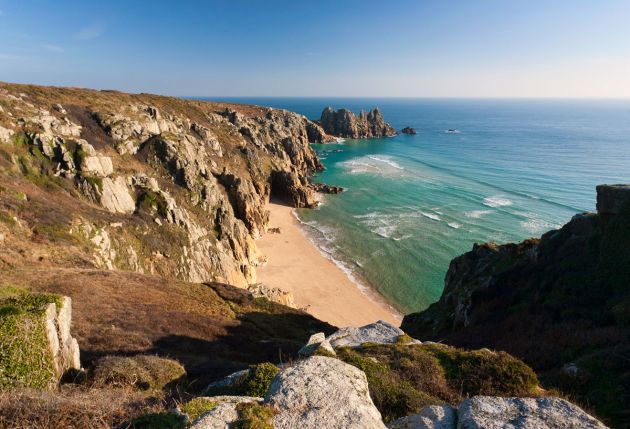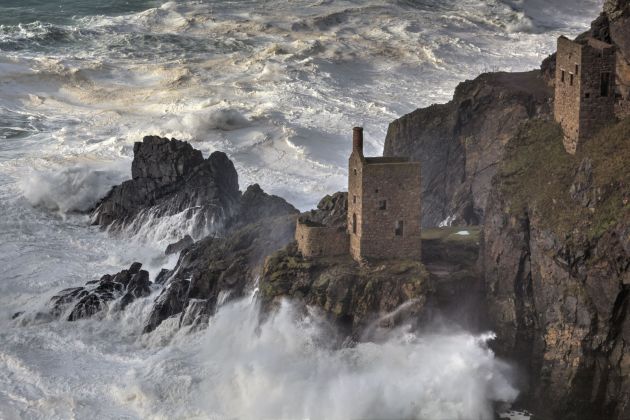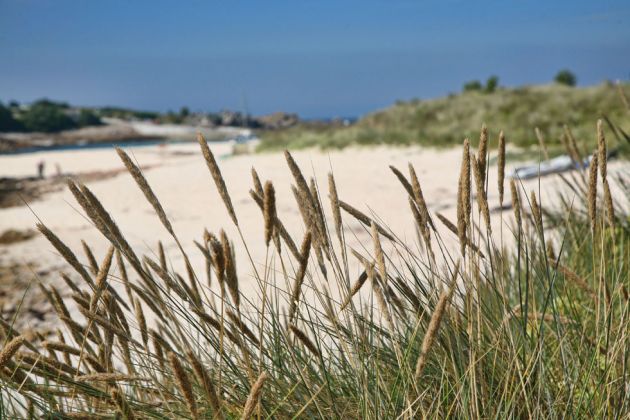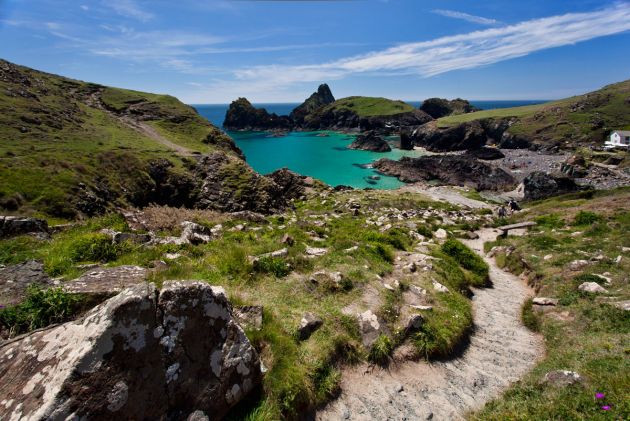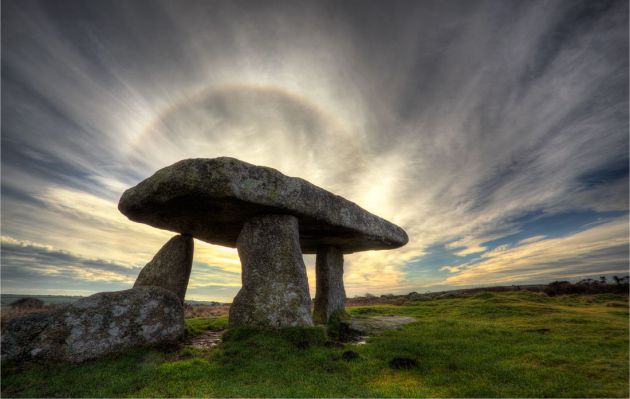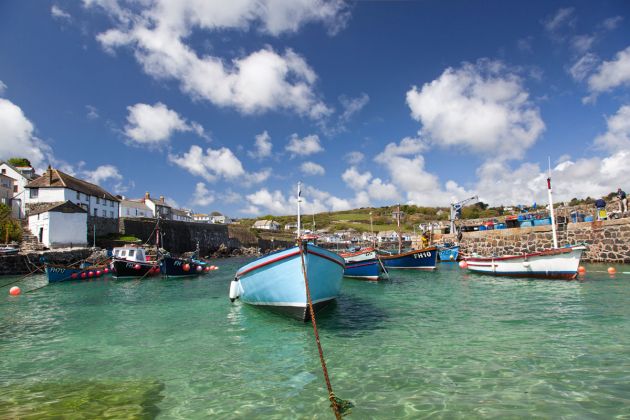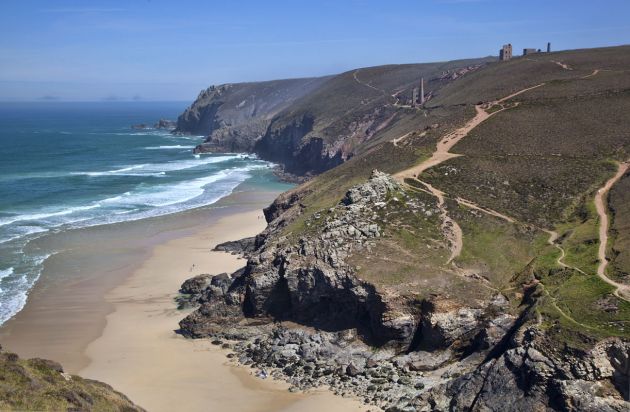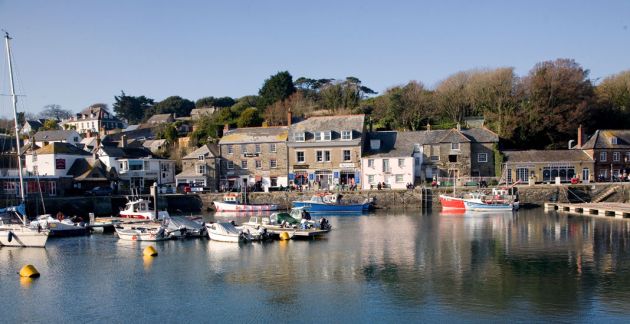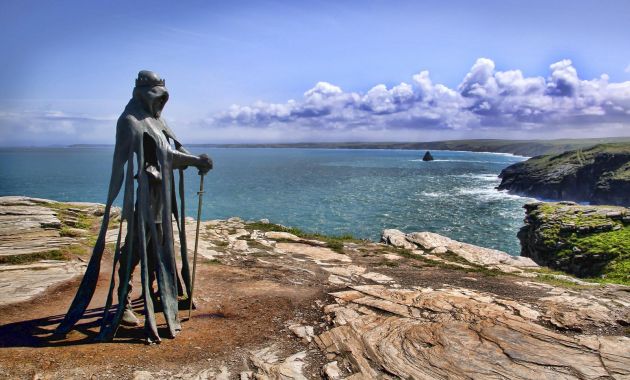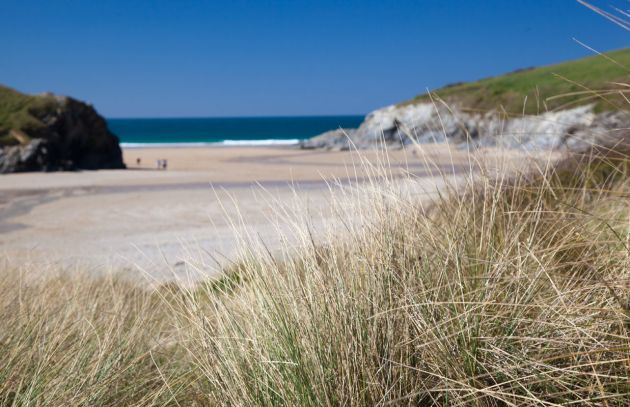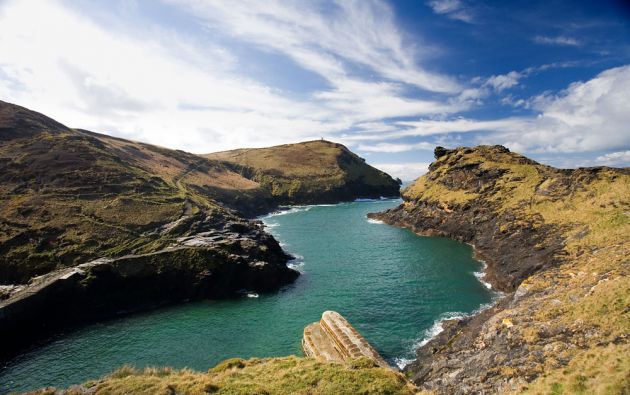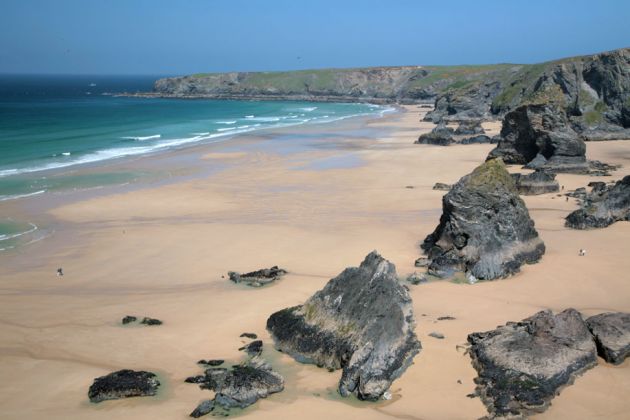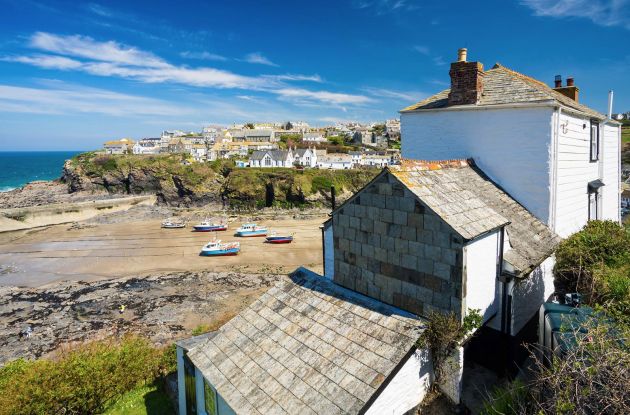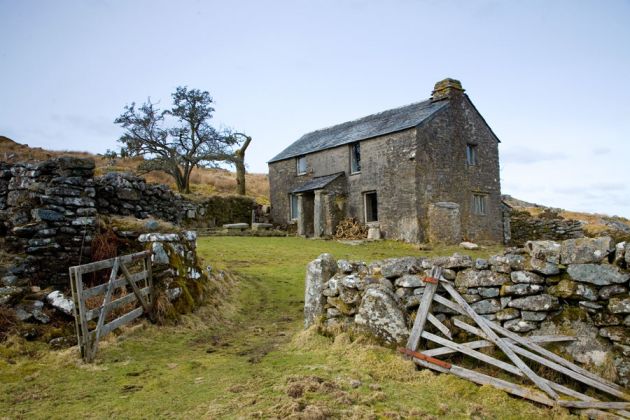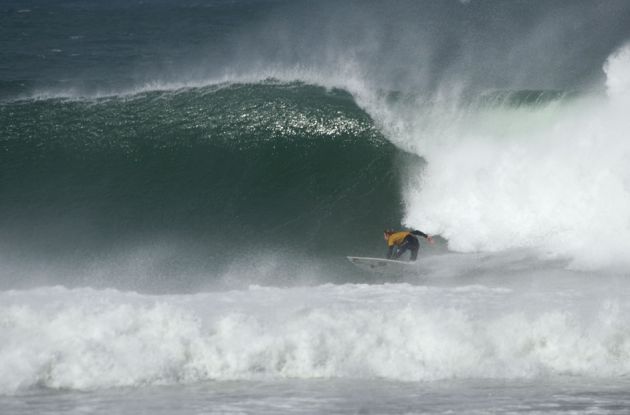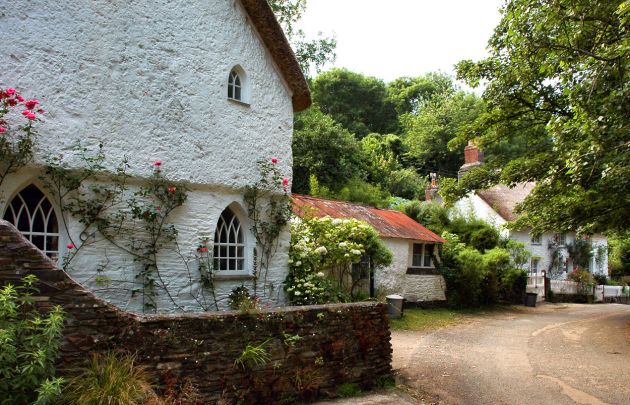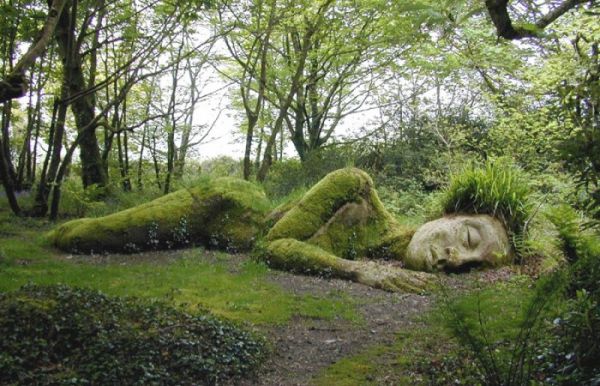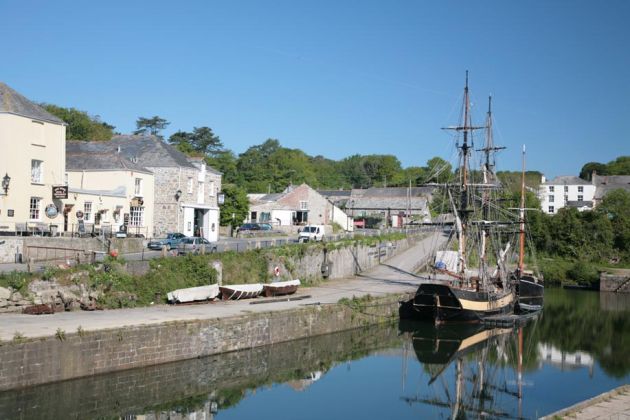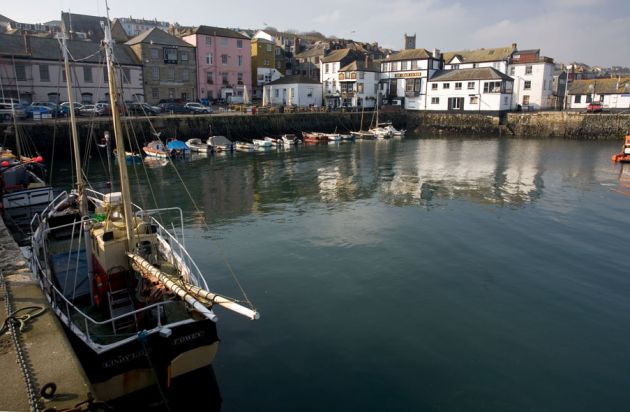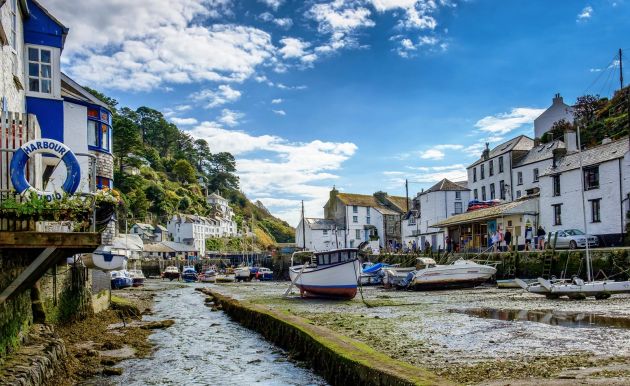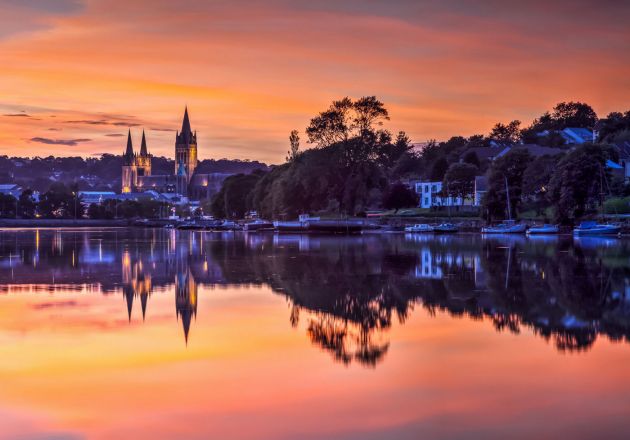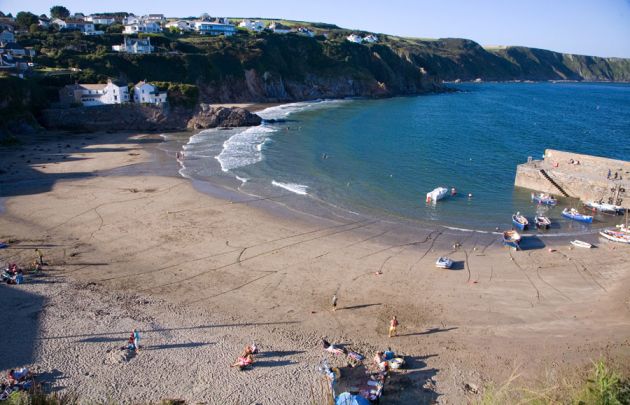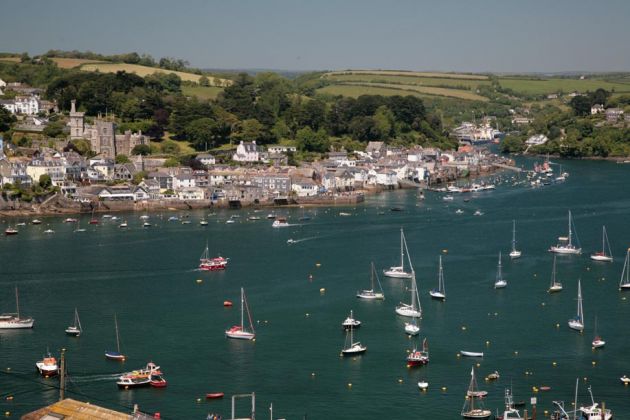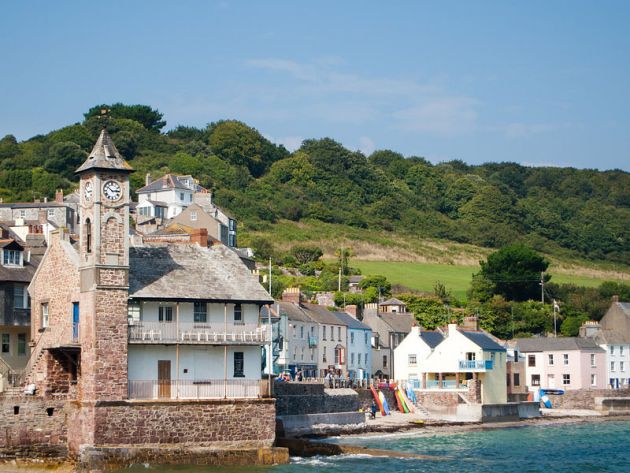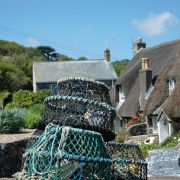The 28 Best Places to Visit in Cornwall
It has to be said Cornwall is not short of breathtaking scenery, stunning beaches and picture-postcard coastal villages. Here at the Cornwall Guide we have spent years visiting practically everywhere from Land's End to Launceston, and with all but the tiniest number of exceptions we love it all. But what are the very best places in Cornwall that everyone should try and visit at least once?
We have had great fun compiling this ultimate Cornwall bucket list and have tried to keep a balance so there is something for everyone. And for your convenience we have also divided the list up into sections (North, South and West) as we know it can take a while to get around Cornwall, particularly in the summer. We wouldn't suggest you try to visit everywhere on this list in one day, or possibly even in one trip, but you should definitely try to do it in a lifetime.
As a bonus you will find that many of the very best places to visit in Cornwall are also absolutely free!
West Cornwall
Stretching from the old mining heartlands of Camborne and Redruth, to the very end of the world (Land's End) this area of Cornwall contains a wealth of stunning coastal scenery, ancient sites and evocative ruined mine workings. West Cornwall is also a long-standing haven for artists who have been coming here for over 100 years in search of the quality of light and magical surrounds.
Mousehole
Described by the poet Dylan Thomas as the 'loveliest village in England', it is difficult to argue. This is the archetypal Cornish fishing village with its granite cottages huddled around the picture perfect harbour. Located on the western edge of Mounts Bay, Mousehole is just a couple of miles from the town of Penzance and is the ideal spot to while away a couple of hours wandering the lanes, grabbing a bite to eat or enjoying the sheltered, sandy beach.
St Michael's Mount, Marazion
St Michael's Mount is a sight I see most days and as such I think I take it somewhat for granted. But, on the infrequent occasions I do actually think about it, this place is amazing! Basically the Mount is a forested island just off the Marazion coast in a wide, sheltered bay. Sitting atop of the island, rising out of the trees, is a fairy-tale castle, whilst huddled at the foot is a tiny village of granite cottages, cobbled lanes and a sturdy harbour. St Michael's Mount really is pretty unique and even those of us who live within sight of it are often reminded how stunning it is
St Ives
Judging by the summer crowds there aren't too many people visiting Cornwall who don't make it to St Ives. Set on the north coast, not far from the western tip of Cornwall, St Ives has it all. Sure, the golden sand beaches offering both surf and shelter are a major draw, but this is a town which absolutely oozes charm. At its heart is the old 'Down-a-long' area around the harbour is a maze of cobbled lanes lined with whitewashed fishermen's cottages. The picturesque harbourfront is home to any number of eateries and bars, all taking advantage of some of the best views in Cornwall. The town's rich artistic heritage is reflected in any number of galleries, small and large, which vie for space with quirky little shops.
Minack Theatre & Porthcurno Beach
The far-west Cornish village of Porthcurno is tucked away, just around the coast from Land's End and about 10 miles from Penzance. As a village it is very unremarkable with the large car park being its most notable feature. But in terms of attractions (both natural and man-made) Porthcurno is a veritable hotspot. Personally speaking, I think the beach here is the most beautiful in Cornwall, and I've seen them all. The producers of Poldark seem to agree as they chose adjoining Pedn Vounder beach for several scenes in the TV series.
Perched on the cliffs at the western end of the bay is the Minack theatre. With a backdrop of the cliffs and ocean this has to be one of the most unusual and stunning theatres to be found anywhere. The Minack is all the more remarkable as it was largely the work of one woman, Rowena Cade. She invested much of here lifetime into the project and the finished article is a thing of beauty which does not diminish from its awesome natural surroundings.
Botallack, St Just
In the Pre-Poldark era the cliff tops of Botallack were known as just that. Today you are more likely to see them referred to as "Poldark Country" as this was where much of the filming involving mining scenes was carried out. It isn't hard to see why - what could be more dramatic than the combination of rugged cliffs, the churning Atlantic Ocean and some of Cornwall's best preserved mine engine houses. Most notable of these are the Crowns engine houses which were already fairly well known before Poldark. Perched at the bottom of the Botallack cliffs these were only used as a backdrop with Wheal Owles East featuring as "Wheal Leisure".
The cliffs here are also home to the Arsenic Labyrinths - a wonderful work of Victorian engineering which now double as a fantastic adventure playground for kids. Much of the Botallack cliffs are owned by the National Trust now and are a true vision of Cornwall's unique landscape and history. Visiting today it is hard to imagine how little over a century ago this was the workplace of hundreds of people and at the centre of the industrial revolution.
Isles of Scilly
It is actually debatable whether the Scilly Isles are part of Cornwall or not. I will happily claim them as such, whilst the islanders might not be so sure! Located around 30 miles west of Land's End, the Isles of Scilly are just about visible from the mainland. However, they are a world apart in both appearance and way of life.
If you like dazzling white sand beaches lapped by clear, calm azure waters with a backdrop of sub-tropical foliage, then the Isles of Scilly might just be for you. Throw in the fact that you may well have one of these beaches to yourself and you could be forgiven for thinking you had been transported to a deserted Caribbean island. Of course, you haven't been, and the weather will often as not remind you of this! That said this is one of the warmest places in Britain, which is why one of the islands' main industries is flower growing with the earliest crops in the country.
Kynance Cove
Situated within a couple of miles of Lizard Point, the most southerly headland in mainland Britain, Kynance Cove is beautiful freak of geology. It is easy to say each and every beach in Cornwall has its own special character, but Kynance really is quite unique, and in a good way. Beyond the white sand and turquoise water it are the somewhat otherworldly rock formations that define the cove. Carved into sea stacks, caves and islands over the millennia these iconic forms have equally memorable names such as The Parlour, Asparagus Island and The Drawing Room.
Ancient Stones
Few places in Britain have quite the concentration of ancient sites as Cornwall, and it seems the further west you travel, the more there are. As such the far west of Cornwall is home to literally hundreds of prehistoric sites including standing stones, quoits, stone circles and burial chambers. Thousands of years old these imposing stone structures date back to the Bronze Age and even the Stone Age. Personally I find these places quite magical and the sense of history they exude is almost touchable.
Although there are many ancient sites in West Cornwall they tend to be concentrated into a few localities such as Lamorna and Madron. Perhaps the most iconic of these stones are Lanyon Quoit (pictured) and Men-an-Tol, which is only a short walk away. The Merry Maidens are also worthy of a visit and one of my favourites is the fogou at Carn Euny, although this takes a little finding.
Cadgwith & Coverack
Both of these villages are located on the more sheltered eastern side of the Lizard Peninsula and both were built around the thriving fishing industry. Beyond this the two villages are quite different, but equally lovely.
Cadgwith is the most southerly of the two, barely 2 miles around from the Lizard Point. As such it is a little more rugged than Coverack, sitting in a steep-sided valley with all roads leading down to the cove. The little shingle beach here doubles as the harbour with fishing boats pulled up on the sand and the old fish cellars opening onto the beach. One thing that is noticeable about Cadgwith is how many of the cottages here have thatched roofs, adding an extra air of quaintness to the village.
Coverack feels much more open and even has a fairly wide sandy beach. The other highlight is the sturdy harbour built of local serpentine and hornblende rock. Owing to the geography of the Lizard the village is quite remote - the roads are good, but it's still a fair drive from anywhere.
North Coast
Characterised by rugged granite cliffs punctuated by wide sandy bays this is the landscape people most often associate with Cornwall. This is the real Poldark country where the dramatic power of the Atlantic Ocean meets mining country. But it is also a place of family holidays with resort towns like Bude, Padstow and, of course, Newquay.
Chapel Porth & Wheal Coates
Possibly one of the most iconic engine houses in Cornwall, Wheal Coates sits perched on the cliffs above one of Cornwall's loveliest beaches - Chapel Porth. All this was not lost on the Poldark location managers who saw it as the perfect on screen depiction of Nampara Valley. It appears in more than one episode with horses galloping across the sands and the engine house standing in as "Wheal Grace".
Hidden away between Porthtowan and St Agnes, Chapel Porth beach is a favourite with local surfers. The waves here can be the best on the coast but the regulars are fiercely protective. This is a spot to visit when the tide is out and the golden sands stretch away beyond the cliffs. At this state of tide you will find caves and pools to explore among the epic north coast scenery.
Padstow
The charming little harbour town of Padstow has grown and grown in popularity over the last couple of decades. Many people will point a finger to celebrity chef Rick Stein for raising the town's profile, but all the charming and surrounding beauty have always been there.
Beyond the picture postcard harbourfront are some pretty little streets lined with quirky shops and some great places to eat. But Padstow, like its West Cornwall contemporary St Ives, is also home to a number of fantastic sandy beaches. Admittedly they are not quite as front and centre as in St Ives, but the closest is only a 5 minute walk from the harbour.
Even if beaches aren't your thing there's plenty of exploring to be done beyond the town; this is where the Camel Trail cycle path starts and the camel estuary itself provides a beautiful backdrop for a range of watersports.
Tintagel
Personally I have something of a love/hate relationship with Tintagel. On the negative side I find the village a little tacky with its mix of new age and bucket & spade shops. Also it often feels too busy, but maybe this is just me being selfish as I want to experience the magical and majestic natural scenery just as it was in the Days of King Arthur.
Whatever, my reservations, I still think anyone visiting North Cornwall should stop off at Tintagel. The coastal scenery here is as good as it gets and there is no doubting the poignant atmosphere that hangs about the castle and cliffs. And if you do feel like braving Tintagel's high street, the Old Post Office is well worth a look.
Newquay's Out of Town Beaches
Newquay is well known for its beaches. In fact the town's entire reputation as a resort is built on the quality of its miles of fantastic golden sand. Generally speaking it is hard to find fault with any of Newquay's beaches - what's not to like about long sandy stretches with great waves and family-friendly facilities. That said, Newquay isn't my favourite place in Cornwall, particularly mid-summer. Therefore I would recommend heading out of town to one of the equally fantastic beaches beyond Pentire Head in the west or Trevelgue Head in the east. Here you will find, stunning, often uncrowded beaches like Crantock, Whipsiderry and Porth Joke.
Boscastle
I remember, many years ago, seeing a photo similar to the one above and thinking, what is this incredible looking place?! The deep, snaking inlet of Boscastle has the look of a fjord or Scottish loch but is in fact on Cornwall's north coast. With very little else offering a safe haven to ships along the entire coast Boscastle grew as a thriving port in the 18th and 19th century. Set in a steep, wooded valley the village provides a charming counterpoint to the dramatic and rugged natural beauty of the harbour. Spend a few hours wandering around the village and make time to visit the Museum of Witchcraft and Magic with its unique and extensive collection.
Bedruthan Steps
Bedruthan Steps is possibly the easiest beach in Cornwall to recognise. It might just have been another gorgeous north coast sweep of golden sand were it not for the series of huge sea stacks running the length of the beach. It is to these, and some Victorian storytelling, that the beach gets its name. Legend states that the giant Bedruthan used the rocks as stepping stones to cross the beach, however, it seems that this version of events was only invented in the late 19th century to woo tourists.
Regardless of how the beach got its name Bedruthan Steps really is one of Cornwall's most iconic spots and a place of beauty. If possible it is worth heading down to the beach at low tide where you can really appreciate the size of these giant stacks. But watch out for the tides and don't swim as the rip currents are treacherous here.
Port Isaac
Now famous as Portwenn from the TV series Doc Martin, Port Isaac needs little introduction. Visitors familiar with the show will find narrow, winding streets strangely familiar as they inevitably drift down towards the working harbour-come-beach. This North Cornwall village really is the quintessential fishing village and is bursting with charm.
Even before Doc Martin, Port Isaacs charms were recognised by the film industry and it even featured in the original 1970s Poldark series. Of course with the fame have come the visitors, but don't let that put you off - Port Isaac is real gem.
Bodmin Moor
As someone who likes to get away from the crowds and appreciates raw, rugged beauty, Bodmin Moor is a particular favourite of mine. Although this might not appeal to everyone it is worth pointing out that there are fair bit of variety to this wilderness in the heart of Cornwall.
Designated an Area of Outstanding Natural Beauty much of the moor consists of just that; sweeping moorland punctuated by granite peaks. But within this landscape are numerous ancient sites and natural features, many of which have myths and legends attached to them. Dozmary Pool, for example, is said to be where the "Lady of the Lake" took King Arthur's sword, Excalibur. Around the edge, beyond the 'high moor' are a number of pretty villages with some of the sturdiest granite cottages you'll find anywhere.
Surf anywhere...
Everybody knows Newquay is the capital of surfing in the UK, right? Well there's no arguing that there are often great waves here, and on its day Fistral beach is a class act. But there's more to surfing than Newquay - there are awesome waves up and down the north coast from Bude to St Ives. Each has its own set of perfect conditions and some are better for beginners than others, but as a rule, there is nearly always more surf on the north coast than the south coast.
Secret spots aside, our favourite surf spots on the north coast are Polzeath, Watergate and Harlyn for the beginners and Porthtowan, Perranporth and Fistral for the more experienced surfers.
South Coast
More sheltered than the other coasts and with something of a subtropical microclimate Cornwall's south coast is also home to some of its most beautiful scenery. Wide river mouths form natural harbours which give way to picturesque wooded creeks further upstream. But this is Cornwall so you won't be left wanting for wide sandy bays and idyllic fishing villages either.
The Helford
Tucked away in the shelter of the Lizard Peninsula, not far from Falmouth is the Helford, a uniquely beautiful area of woodland, winding creeks and picturesque villages. This is quite different to the scenery in much of the rest of Cornwall, but equally lovely.
The Helford is also home to gardens galore. Not one, but two of Cornwall's finest gardens occupy neighbouring valleys which run down to the riverside. It's hard to choose between Glendurgan and Trebah - I mean, how different can two gardens set in valleys on the banks of the Helford be? Well, quite a lot. Personally I prefer Glendurgan as I have National Trust membership and the beach at Durgan is particularly pretty.
Lost Gardens of Heligan
The Lost Gardens of Heligan were never really near the top of my Cornwall to do list. It was only when I had the opportunity to take the family there for free a few years back that I finally made the effort. Now it sits near the top of my list and is a definite must see.
Set in the rolling countryside of the Roseland, less than a mile inland of Mevagissey, Heligan is almost as much a story as a beautiful collection of gardens. Owned by the Tremayne family from the 17th century the estate employed a small army of workers. However, after the workforce was devastated during the First World War the gardens were left to return to nature.
Nearly 100 years later it was Tim Smit, the founder of the Eden Project, who "rediscovered" Heligan. Still a work in progress the gardens have a fascinating variety from subtropical groves to huge walled kitchen gardens - all with a little 21st century quirkiness mixed in.
Charlestown
Barely a mile outside of St Austell is the Georgian harbour and village of Charlestown. You will often here that a place has remained unchanged for over a hundred years, but this really is the case with Charlestown. As a result the harbour here has become something of a staple filming location for period dramas.
Coming equipped with its own fleet of sailing ships the little harbour has featured in numerous films and TV series over the decades, including, of course, Poldark. Charlestown actually featured in both the original 1970s series and the recent Poldark TV adaptation.
Overlooking the harbour are a few spots to grab some food or a drink. While to either side are some stretches of shingle beach - not the best around but often queit and good for snorkelling.
Falmouth
Think of a fair-sized Cornish town with great beaches... you were probably thinking of somewhere else - Newquay or even St Austell perhaps. While it is true both those have great beaches I wish I could say the same for the towns themselves. Falmouth on the other hand is a great town that also happens to have some great beaches. So good in fact, that the Sunday Times has ranked it among the best places to live in the UK several years running.
Perhaps suggesting the town is a British Barcelona is going a little too far, but I can see what they are getting at. Falmouth is a thriving town with a flourishing creative and art scene. Home to an art school for many years, this has now grown into Cornwall's only university. The town centre is also home to plenty of quirky independent shops and cafes.
The town's main beaches are all sandy, but it is Gyllyngvase that stands out. Perhaps the only downside is a lack of surf, but if it is watersports you are after this is sailing, paddleboarding and even scuba diving heaven.
Polperro
Polperro is the quintessential Cornish fishing village, it really does have it all. A jumble of whitewashed cottages line narrow streets as they wind their way down to the sturdy granite harbour. The steep tree-lined valley setting creates a natural amphitheatre with the busy harbour front and centre.
As a village, Polperro is very much unspoiled, and it doesn't take much to imagine how it was when fishing and smuggling were the main industries in town. It's a great spot to just wander round for a couple of hours and grab a bite to eat, or better still take a boat trip and see some of the Polperro Heritage coast from the sea. There's even a small beach with a tidal pool, making it perfect for kids. It does get somewhat busy in the summer months, but on the plus side, visitors need to park their cars a fair way out of the village meaning it is largely vehicle free.
Truro
Cornwall's only city, Truro, would barely qualify as a town in many parts of the country. It isn't even the biggest town in Cornwall, but it is home to a fairly impressive cathedral and the county courts.
Set at the head of a tidal river the city has managed to maintain an air of affluence and remains a bustling market town. Whilst the shops here might not impress shopping aficionados from 'proper' cities this is as good as it gets in Cornwall! That said, this is handsome town with some fine Georgian architecture and a wealth of cafes, ideal to while away a few hours. Embrace the fact Truro isn't on the coast and enjoy a different side of Cornwall.
Explore the Roseland
Stretching along the coast from Falmouth to St Austell, and alongside the river to Truro is the Roseland Peninsula, one of the most picturesque and unspoiled areas of Cornwall. Despite its proximity to three of Cornwall's largest towns this part of the coast feels unexpectedly remote.
There's plenty to see within this small area of rolling hills and winding lanes - definitely a couple of days worth, much of which will be spent lost! The coast here has a number of beautiful, yet uncrowded beaches, along with some of the loveliest fishing villages. Head inland and you'll find woodlands and the many creeks which branch off the River Fal. The best-known spot on the Roseland is the pretty harbourside village of St Mawes, a haven for yachts and pleasure craft, all overlooked by an impressive, perfectly preserved 16th castle.
The Eden Project
It would be difficult to make a list of unmissable things to see and do in Cornwall without including the Eden Project. Pretty much everything that can be said about this unique attraction already has; some have even gone so far as to describe it as the "Eighth Wonder of the World". Whilst we think there are possibly more worthy of that title, we are still big fans.
The Eden Project can be thought of as two enormous greenhouses set in a landscaped quarry. Within the greenhouses (or biomes as they are known) are two distinct environments; one a tropical rainforest and the other a Mediterranean climate. You can read all about these elsewhere, I'm just going to emphasise what a great day out the Eden Project offers. To be honest the last couple of times we have been the biomes have more of an after thought. It's just a nice place to spend some time, and they put on some great activities. Is it overrated? Who knows, but it is certainly one not to miss.
Fowey
The small riverside town of Fowey is undeniably one of the gems of the south coast. Set in an area of Outstanding Natural Beauty this river haven has long been a draw to the yachting crowd, and as such cemented the town's reputation as an upmarket holiday destination.
Built on a steep wooded hillside the old town is characterised by quaint cottages and narrow cobbled streets. These give way to elegant Georgian, and even a few medieval buildings towards the riverfront and along the town's main Fore Street. Fowey's maritime heritage is further enhanced by the pair of fourteenth century blockhouses which guard the river mouth.
Fowey also has strong literary connections including associations with Sir Arthur Quiller-Couch, or Q as he was known, Kenneth Grahame, of Wind in the Willow's fame and most notably Daphne du Maurier. It was just across the river at Bodinnick that the du Mauriers had a family home and in later years du Maurier herself had a home in Readymoney Cove. For over 20 years the Fowey Festival of Art & Literature has celebrated the town's cultural credentials.
Cawsand and Kingsand
Sometimes referred to as Cornwall's forgotten corner, the Rame Peninsula in the southeast of the county is home to a number of little known gems. The scenery is no less spectacular here than other parts of Cornwall and the area is just a short ferry ride across the Tamar river from Plymouth, yet still it remains largely off the tourism radar.
Along with Rame Head and the sandy miles of Whitsand Bay the peninsula's chief attraction are the twin villages of Kingsand and Cawsand. Once situated on different sides of the Devon / Cornwall border both now firmly sit within the Duchy. Located either side of a small headland in a wide sheltered bay the villages look out across Plymouth Sound towards the South Hams. Both feature charming seafronts lined with cottages overlooking a sandy beach, but it is Kingsand which is best known with it's King George clock tower practically on the beach.
